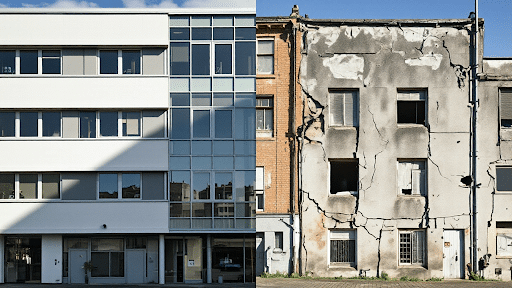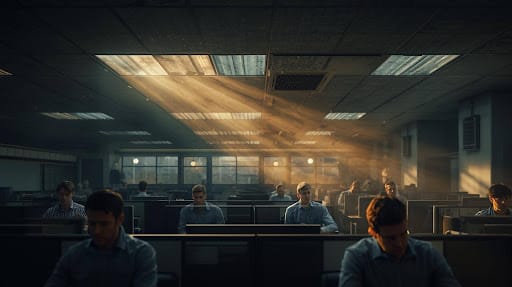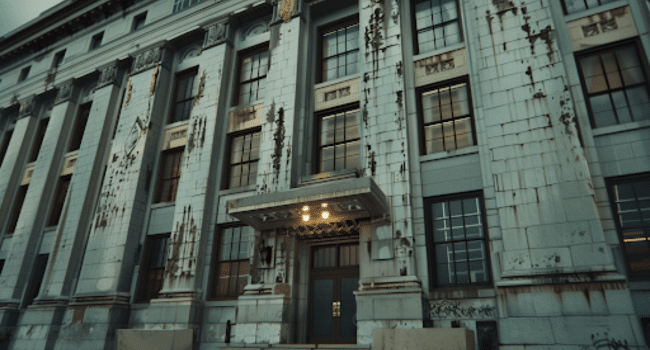Table of Contents
I’ve walked through my share of government buildings. Some of them are beautifully maintained and polished and humming away quietly efficiently. Others tell a different story, peeling paint, flickering lights, elevators groan before they move. What I’ve learned is a simple one, if you put off maintenance, the problems don’t go away. They multiply.
Facility managers in public buildings are faced with an all-too-familiar conundrum, constrained budgets, low staffing levels and too many competing interests. It’s tempting to delay a repair when the roof is not leaking yet or the HVAC is still limping along. But every time we postpone maintenance there the clock starts ticking on something a lot bigger, and very expensive.
What It Means to Really Put Off Maintenance
To defer maintenance involves postponing necessary repairs or replacements due to time, money or staffing constraints. It sounds harmless, perhaps even smart, in the short term. But what usually happens is a domino effect resulting in increased repair costs, emergency repairs and building performance.

This is not a small problem in government facilities. The deferred maintenance and repair backlogs across government agencies ran at more than $76 billion in recent years, according to a report from the Government Accountability Office. That’s not just old buildings going grey, it’s offices, courts and service centers becoming less safe, less efficient and less productive.
I remember being in a county office where the ceiling tiles had been removed due to a slow leak that was “under review.” Two years later, the leaking had spread, damaging the wiring and insulation. What would have been a $2,000 repair became a $40,000 project. That’s the hidden cost that few people see coming. The GAO finds that deferred maintenance among federal agencies rose from 2019-2022, underscoring that one-time delays can scale quickly.
The Real Cost of Deferred Maintenance
The cost of deferred maintenance isn’t just about fixing something some day in the future. It’s the multiplying effect over time. Every time there is a delay in inspection or a postponement of a tune-up for the HVAC system increases the chances for a bigger failure.

Studies have shown that for every dollar of deferred maintenance facilities spend, they can spend four to seven dollars more in future repairs. Imagine putting off a $10,000 chiller repair now, and instead having to replace it for $60,000 in the future. When budgets are tight, that is a difficult cycle to break.
Deferred maintenance also decreases the operational efficiency. Poorly maintained systems force more energy. A clogged air filter, for example, can increase electricity use by as much as 15 percent. Over hundreds of buildings those little inefficiencies suck millions from public budgets every year.
How Deferred Maintenance Affects Facility Management
To a facility manager, deferred maintenance is similar to holding an invisible debt. It doesn’t show up on a balance sheet but it’s always there. This affects the way staff allocate time, budgets are prioritized or facilities serve the public.

Facility managers are frequently juggling between preventive maintenance and emergency repairs. The problem is, emergency repairs are reactive and unpredictable. They interrupt work, strain staff, and consume resources for long-term improvements.
Preventive maintenance, on the other hand, distributes cost over a period of time. It helps to predict when systems will fail, thereby enabling smoother scheduling and lesser and planned expenses. The irony is that this is known by everyone, but when a budget is slashed, maintenance is usually the first area to be cut, just before equipment begins to break.
The Ripple Effect: Safety, Air Quality & Productivity
There’s another cost we don’t talk about enough; human comfort and safety. Neglected HVAC systems cause bad air quality. Failing lights are detrimental to accident risks. Electrical problems can lead to code violations or fines.

In one government building I consulted for, poor ventilation caused an increase in staff sick days over the summer period. They had repaired it months later but not before productivity had suffered a measurable hit. Deferred maintenance doesn’t just affect equipment, it affects people.
Aging infrastructure also causes compliance risks. Failing to comply with building codes or safety standards may result in fines or even temporary closures. The irony? Those penalties usually go well beyond what preventive maintenance would have cost in the first place.
Why Governments Maleficently Defer to Maintenance So Often
It’s rarely about neglect. It’s about priorities. Public agencies have to support every line of their budget, and often maintaining is not seen as a priority compared to public facing services.

I’ve sat in meetings where facility managers made the case for HVAC replacements but were instructed to “make it last another year.” That year turns into five. By then, the problem of maintenance is not only mechanical but financial and political.
There’s also the problem of visibility. A pipe that leaks hardly makes headlines. But a broken elevator in a courthouse does. Governments are incentivized to respond to crises that are visible, not invisible risks.
Raising Maintenance Standards in All FSG Locations
At FSG sites, teams have experienced the impact of proactive strategies on changing the game. Implementing a single maintenance strategy across multiple FSG locations allows managers to prioritize the most important systems, while still ensuring that more minor maintenance tasks aren’t overlooked.

Proactive maintenance helps to keep the facilities running smoothly and prevents any emergency situation that can disrupt essential operations. When you notice patterns in other facilities, perhaps recurring lighting faults or inefficiencies in your HVAC systems, you’ll be able to identify the root cause very early. This is where technology, data and the consistent use of inspection protocols make all the difference.
Lack of maintenance: When FSG teams use prevention/ proactive maintenance strategies, clients typically see a decrease in emergencies and a better control over long-term costs. It’s not about being perfect, it’s about being consistent. That’s the kind of thinking that should occur with government agencies as well.
From Deferred vs Preventive: A Change in Mindset

Changing from reactive maintenance to preventive maintenance involves culture change. It’s about persuading the decision-makers that spending now saves more later. A good maintenance program records inspection, schedule and cost projections so facility managers can make the case for a return on investment.
Try to track a few simple metrics:
- Total deferred work orders and their dollar amount
- Average response time to emergency repair
- Energy Consumption Trends per Year
- Percentage of maintenance that is planned vs. unplanned
These numbers form credibility. The ones that are helping facility managers communicate why deferring work isn’t saving money: it’s borrowing from the future.
One facilities director I spoke with told me of the turning point: After years of dealing with broken elevators and leaking pipes, his agency implemented a system for a data-driven prevention. In two years, emergency repairs have fallen by 40 percent, and the price of repairing one square foot has fallen by 22 percent. “It wasn’t magic,” he said. “It was maintenance often and maintenance smart.”
Creating a Sustainable Maintenance Strategy
A good maintenance plan begins with truthfulness in evaluation. What are the most critical systems? Which ones have the high downtime cost? Use that data to prioritize.
Then, have set aside a small percentage of the annual budget specifically for preventative work, not emergency. Even the allocation of even 5 to 10 percent can break the cycle of deferral. Use technology, CMMS tools, smart sensors, to track and schedule tasks. Most of all, establish accountability. Assign people to every system and give them the responsibility to report small issues if they grow.
The goal is simple: reduce hidden costs, lengthen the life of assets and maintain safe, efficient facilities that will serve the public well. Federal examples such as the National Park Service’s $22.986 billion deferred maintenance backlog illustrate what happens when maintenance plans are delayed for too long — costs multiply, and assets lose value faster than funding can keep up.
Why Acting Now Matters
Government facilities are assets for the community. Each time maintenance is deferred, a certain amount of value is lost for that asset. The building loses its functionality, efficiency and becomes more costly to run. Over time, those compounding failures endanger those very services the people depend on.
You don’t need a huge overhaul to begin the process of improvement. You just need to have that consistency, transparency and leadership that prioritizes longevity over short-term savings.
Maybe that’s the real lesson. Deferred maintenance isn’t a technical problem, it’s a mind problem. Fix on that and everything else falls in followed.
The Bigger Picture
When governments invest in preventive maintenance, they are investing in reliability, safety, and the public trust. The next time someone asks if to defer maintenance or make the repair now, the answer should be clear. Pay a little today, or a lot tomorrow.
The lesson is applicable to every single public facility, every manager and every single taxpayer. Because what we don’t fix today, we all wind up paying for in the future.
